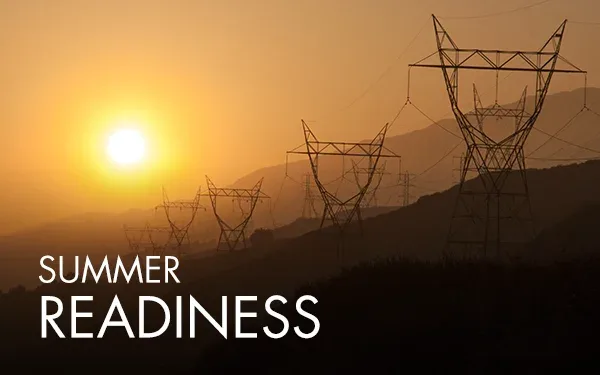Flex Alerts can play an important role during extreme conditions
With the arrival of 2025’s first heat wave in California, this is an opportune time to consider how voluntarily shifting energy use during key hours of the day can support system reliability if grid conditions are strained by extreme heat or other emergencies.
Under a program launched by the state in 2000, California’s grid operator can declare a Flex Alert urging consumers to “flex your power” so less energy gets used during times of extreme high demand or potential supply shortages, typically due to excessive heat or other emergencies.
These alerts usually occur between 4 and 9 p.m., when solar energy production drops but air conditioning use remains high. The alerts aim to prevent power outages by encouraging consumers to shift their heavier use of electricity to mornings and afternoons as much as possible.
To become better acquainted with the program, we encourage California residents to go to the website flexalert.org and register to receive messages about when a Flex Alert will be called. You will find specific but relatively modest steps to help cut energy demand during a Flex Alert and steps to be more comfortable in the hours before a Flex Alert takes effect.
Even though a Flex Alert hasn’t been needed in more than two years, getting consumers to make a handful of modest changes in when and how they use electricity can help keep supply and demand balanced during extreme heat or emergencies such as wildfires or unexpected outages
As described on the flexalert.org website, on the morning of a Flex Alert, consumers are asked to:
- Pre-cool homes by lowering air conditioning thermostats to 72 degrees
- Close blinds and drapes to keep the sun from heating up the home
- Turn off unnecessary lights
- Use dishwashers, washing machines and other major appliances
- Set pool pumps to run early in the morning
- Charge mobile devices and laptops
- Pre-cook meals
During a Flex Alert, from 4 to 9 p.m., consumers should:
- Set air conditioner thermostats to 78 degrees or higher, if health permits
- Avoid using dishwashers, washers, dryers, and ovens
- Turn off unnecessary lights
- Unplug or turn off electrical devices not in use
- Keep blinds and drapes closed to prevent the sun from heating up the home
- Use fans when possible
Also on the Flex Alert site, consumers can find useful conservation tips that can save energy and reduce energy costs year-round.
The ISO-managed grid has become more resilient with each passing year. Since the fall of 2022, more than 16,000 megawatts of new capacity have been added, mostly from 4-hour lithium-ion batteries. This expansion, made possible through partnerships with state agencies and energy providers, helps stabilize the grid during peak hours.
In September 2022, a record-breaking heat wave pushed demand to an all-time high of 52,061 megawatts and Flex Alerts helped keep the lights on. The entire Western Interconnection also hit a record of 167,500 megawatts. Despite the strain, grid operators and consumers worked together to avoid rotating outages.
This summer, California enters the season with more available energy and improved coordination across the region. Still, with extreme weather always a possibility, it’s a good idea to visit flexalert.org and learn how to stay prepared.
You can also learn about current system conditions on the ISO’s website at Today’s Outlook, where you can see current and forecasted demand, current capacity, the next day’s expected peak and more.
We know that not everyone will always be able to take these voluntary steps to shift their energy use when called upon. But the more of us who can make these modest changes if a Flex Alert is called, the better chances we have for keeping the lights on and staying comfortable if Mother Nature turns up the heat or some other threat calls on us to flex demand and be part of the solution to grid reliability.


